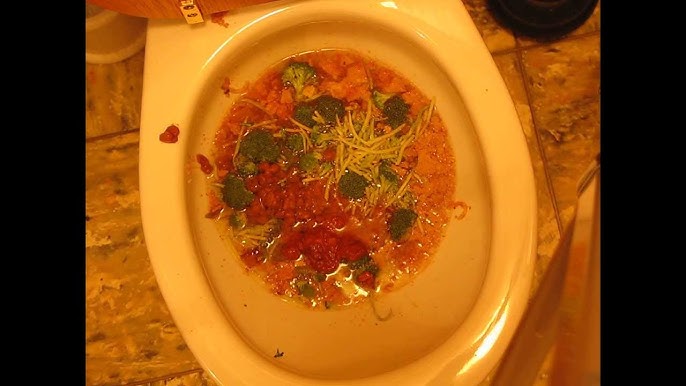Are You Permitted to Dispose of Food Waste in the Toilet?
Are You Permitted to Dispose of Food Waste in the Toilet?
Blog Article
Right here underneath yow will discover a lot of good quality advice all about Flushing Food Down the Toilet?.

Intro
Lots of people are frequently confronted with the issue of what to do with food waste, especially when it involves leftovers or scraps. One typical inquiry that develops is whether it's okay to purge food down the commode. In this short article, we'll look into the reasons individuals may take into consideration flushing food, the effects of doing so, and alternate approaches for proper disposal.
Reasons that people might take into consideration flushing food
Lack of recognition
Some individuals might not be aware of the prospective injury caused by purging food down the commode. They may incorrectly think that it's a harmless method.
Comfort
Purging food down the toilet might feel like a quick and simple remedy to dealing with unwanted scraps, particularly when there's no neighboring trash bin offered.
Idleness
In many cases, people may just select to flush food out of large idleness, without considering the consequences of their actions.
Repercussions of flushing food down the bathroom
Ecological influence
Food waste that winds up in waterways can contribute to pollution and damage water environments. In addition, the water used to purge food can strain water resources.
Plumbing issues
Flushing food can result in blocked pipes and drains, triggering expensive pipes fixings and aggravations.
Sorts of food that need to not be purged
Coarse foods
Foods with coarse appearances such as celery or corn husks can obtain entangled in pipes and trigger clogs.
Starchy foods
Starchy foods like pasta and rice can soak up water and swell, leading to blockages in pipelines.
Oils and fats
Greasy foods like bacon or food preparation oils must never ever be flushed down the toilet as they can solidify and create clogs.
Correct disposal techniques for food waste
Using a garbage disposal
For homes equipped with waste disposal unit, food scraps can be ground up and purged with the plumbing system. However, not all foods appropriate for disposal in this way.
Recycling
Specific food packaging products can be reused, lowering waste and decreasing environmental effect.
Composting
Composting is a green means to throw away food waste. Organic materials can be composted and utilized to enrich dirt for horticulture.
The significance of correct waste monitoring
Decreasing environmental harm
Appropriate waste monitoring methods, such as composting and recycling, aid minimize pollution and protect natural deposits for future generations.
Protecting plumbing systems
By preventing the practice of flushing food down the bathroom, homeowners can protect against expensive plumbing repair services and maintain the honesty of their plumbing systems.
Verdict
In conclusion, while it might be appealing to purge food down the bathroom for ease, it is very important to understand the prospective effects of this action. By taking on proper waste administration practices and throwing away food waste sensibly, individuals can add to much healthier plumbing systems and a cleaner atmosphere for all.
FLUSH FOOD DOWN THE TOILET?
FLUSHING FOOD CAN CAUSE BLOCKED DRAINS IN YOUR HOME
All of the plumbing fixtures in your home are connected to the same sewer pipe outside of your home. This outdoor sewer pipe is responsible for transporting all the wastewater from your home to the Council sewer mains. Even small pieces of food that go down the kitchen sink can cause problems for your sewer. It should therefore be obvious that flushing larger bits of food, such as meat, risks a clog in either the toilet itself or the sewer pipes. Flushing greasy food is even more problematic because oil coagulates when it cools, coating the interior lining of your pipes.
THE TOILET IS NOT A BIN
Food isn’t the only thing that people shouldn’t be flushing down the toilet. People use the toilet to dispose of all kinds of things such as tampons, makeup wipes, dental floss, kitty litter and even underwear. Water goes to great lengths to educate residents about the high costs and stress placed on wastewater treatment systems simply from people flushing the wrong stuff down the toilet. It costs taxpayers millions of dollars each year, and homeowners thousands in blocked drain repairs.
FLUSHING FOOD IS A WASTE OF WATER
Flushing food is a waste of our most precious resource - water. In June this year Level 1 water restrictions were introduced to protect water supply from drought conditions. Much of New South Wales continues to be affected by prolonged drought with recent figures revealing up to 97 per cent of the state remains in drought. Depending on whether you have a single or dual flush toilet, every single flush uses between five and 11 litres of water. In the current climate this is a huge amount of water to be wasting on flushing food that should be placed in the bin (or better yet, the compost).
https://www.jabplumbingsolutions.com.au/blog/can-you-flush-food-down-the-toilet

As a passionate person who reads about Think Twice Before Flushing Food Down Your Toilet, I figured sharing that excerpt was really helpful. Appreciated our entry? Please quickly share it. Let others find it. Thanks a lot for being here. Revisit us soon.
Click Here Report this page